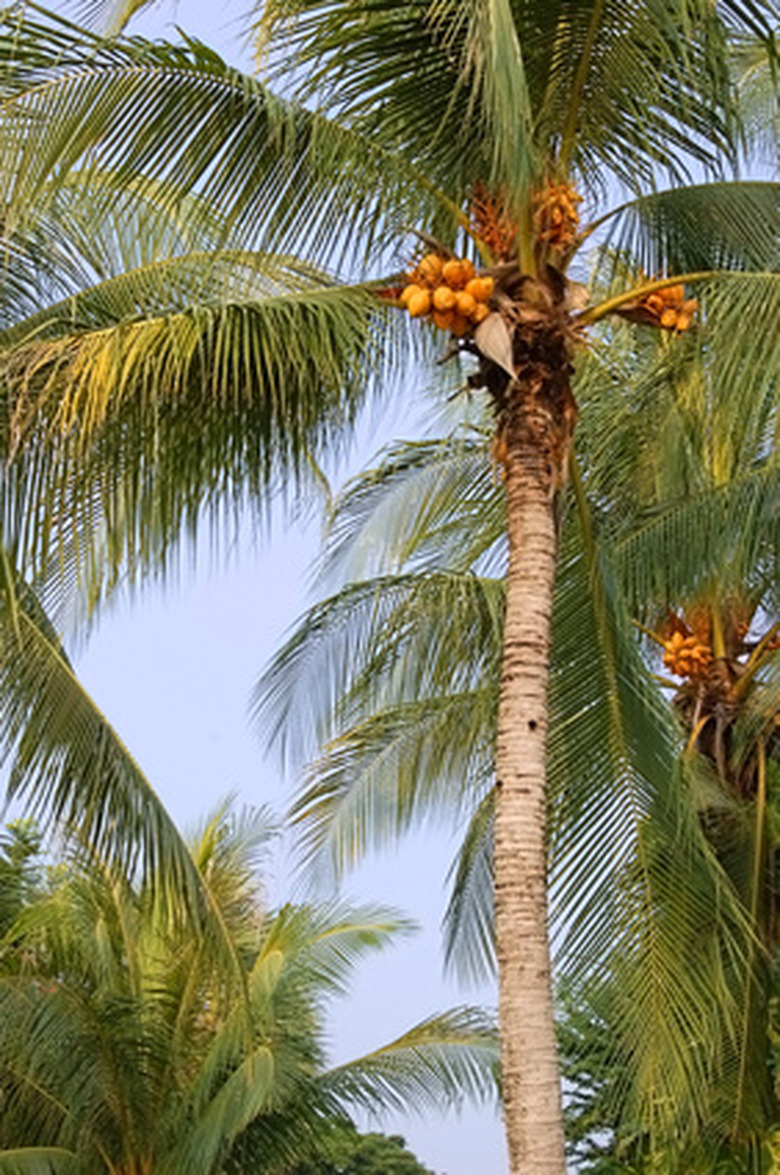Coconut Palm Tree Identification
The coconut palm tree is also known by its botanical name of Cocos nucifera. It is a tall tree, growing to a height of 50 to 80 feet. The crown of the coconut palm tree is round and filled with feathery leaves that are approximately 15 to 17 feet in length. This tree is a symbol of the tropics, it is found growing in Hawaii, the Virgin Islands, south Florida, the Pacific region and other tropical areas.
Origin
Scientists have varied opinions as to the origin of the coconut palm tree. Some feel that its origin is Southeast Asia, while others feel that it got its origin in Melanesia, and then spread to the regions of coastal Asia, east Africa and finally to the Atlantic coast of the Americas. A third opinion is that the Pacific coast of Central America is where it originated from. In reality–its origin remains a mystery.
- The coconut palm tree is also known by its botanical name of Cocos nucifera.
- The crown of the coconut palm tree is round and filled with feathery leaves that are approximately 15 to 17 feet in length.
Identifying Characteristics
The coconut palm tree can be identified by several characteristics: its columnar trunk, its 15- to 17-foot-long and 4-foot-wide feathery shaped leaves that occupy the crown of the tree and its fibrous covered fruit. The fruit is quite interesting; it can grow up to 15 inches in length and 12 inches in circumference. Beneath the fibrous covering or husk there is a round nut that has a hard hairy shell. The size of the nut is up to 8 inches in diameter and up to 12 inches long.
Climate and Soils
Generally, the coconut palm tree is seen along coastal areas in sandy shorelines. This is because it is highly tolerant of salt spray and sandy soil conditions. The trees do adapt to inland soils as well, as long as they are planted in well-drained areas. Temperature is very important to their survival, they need an average temperature of 72 degrees Fahrenheit. These trees will not survive in an area where the temperatures dip below 32 F. They need to be planted in full sun, and require a climate that has an annual rainfall of approximately 30 to 50 inches.
- The coconut palm tree can be identified by several characteristics: its columnar trunk, its 15- to 17-foot-long and 4-foot-wide feathery shaped leaves that occupy the crown of the tree and its fibrous covered fruit.
Coconut Meat and Milk
The inside of the nut is where the meat of the coconut can be found. This meat is also called the "copra." When the coconut is mature the meat is approximately an inch thick and hard. Coconuts that are not mature/ripe are filled with coconut milk, as the coconut ripens the coconut milk is absorbed into the meat of the coconut itself. When the fruit is completely ripe, only a small amount of coconut milk is left.
Uses
The coconut palm tree is valued throughout the tropical areas of the world for its many uses. In many cultures, the trunks and leaves of the coconut palm tree are used for building materials to construct walls and roofs. The coconut meat is eaten, and also used to make beverages. Coconut oil is used to make soap and margarine. Dried coconut is also a flavorful ingredient in cakes, cookies and pies. Coconuts also are a source of herbal remedies for the treatment of heart disease, high blood pressure, and digestive problems to name a few.
- The inside of the nut is where the meat of the coconut can be found.
- In many cultures, the trunks and leaves of the coconut palm tree are used for building materials to construct walls and roofs.
